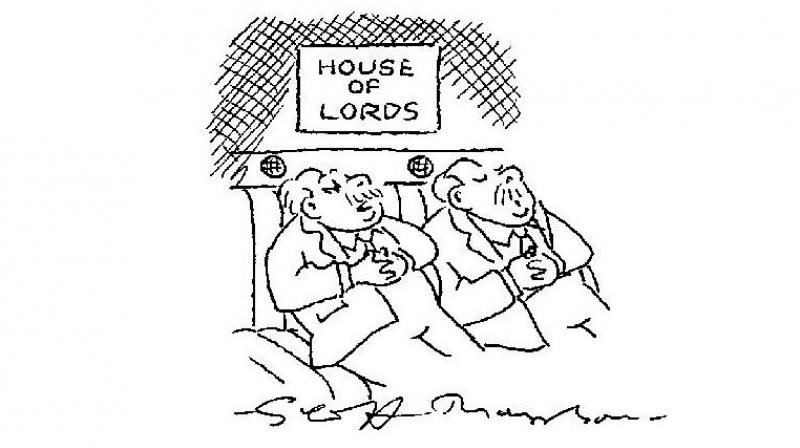Note ban: Success without victory
Black money and corruption hurt development by depriving the state of funds that would have gone into government schemes.

Demonetisation of higher currency notes — which constituted 86 per cent of India’s cash in circulation — was intended to provide a “total” solution for the serious malaise of domestic black money and was announced without advance notice for obvious reasons. Regardless of the debate on its timing, the fact is that it was aimed at neutralising unaccounted money and hitting at the roots of corruption. That it caused a serious dent on the terror funding — whether in Kashmir or in the “Red Corridor” — is an important dividend for national security accruing from this drastic step.
Elimination of black money strengthens, directly or indirectly, the cause of national security. Illicit money facilitates entry of dubious elements into the power structure, makes it easier for enemy agents to use the lure of money for their purposes and directly aids the funding of terrorists and drug trade. It was in the 1993 Mumbai train blasts that the collusion of Dawood Ibrahim — the mafia don enjoying a large base in that city — with Pakistan’s ISI had been exposed and since then there has been an increasing use of black money-fake currency mix by Pakistan agencies, in the ongoing “proxy war” against India. Fake currency was smuggled in by the same routes, including India’s soft borders with Nepal and Bangladesh, that were being used by the drug cartels. Black money made hawala transactions easy. It is expected that with effective curbs on unaccounted money, our security agencies will be able to monitor unusual online communications and fund transfers that masked terror activity more effectively.
There is little doubt that demonetisation has deescalated the civic unrest in Kashmir, proving what our intelligence agencies had already reported — that the stone-pelting mobs seeking to destabilise the Valley comprised of elements who had been hired by enemy agents and separatists. This was also the reason why the cycle of incidents of burning of school buildings could not be kept up by these miscreants — illicit money in their hands had shrunk. The recovery of demonetised notes along with new Rs 2,000 notes from two LeT terrorists killed at Bandipora recently did confirm the presence of local supporters of this terror outfit.
The impact of demonetisation on the Naxalites is even more profound and visible. The police has recovered huge amounts of old currency from the forest areas of Bastar district and some other parts of the Maoist belt in Chhattisgarh. Naxalites maintained large cash dumps as they had been extracting money over the years by way of levy from contractors, business enterprises and politicians. Deprived of money after demonetisation, some stray groups of Naxalites have surrendered to the authorities. Furthermore, the Maoists, known for looting the police armoury for collecting arms, could resort to raiding banks for money and that is why the police made strong security arrangements in many vulnerable areas. It is interesting, but not surprising, that terrorists looted a bank in Pulwama in south Kashmir in December for sustaining themselves. Intelligence and paramilitary must bend their energy to mount pressure on both cross-border terrorists as well as the Naxalites so that supply of funds to them through illicit channels, including hawala, was not restored.
At the political level, the decision to demonetise demonstrates a combative boldness of Prime Minister Narendra Modi in dealing with matters he thought were directly linked with national interests. A country that had become used to a certain permissiveness about illicit money and particularly in the conduct of elections considered the use of black money as a fait accompli, could see demonetisation turning out to be a huge cleansing operation. Black money and corruption hurt development by depriving the state of funds that would have gone into government schemes. A clean economy restores faith in hard work, promotes social cohesion and adds to national pride. It helps citizens to act as the eyes and ears of the state and note suspicious transactions and activity for sharing their information with the government — something they would not do in a corruption-ridden dispensation. To an extent, this again strengthens national security since in such an environ the security agencies of the country would have the advantage of a flow of information that helps their mission.
It is known that black money in India was in the hands of a very small minority of the affluent belonging to both the business and political class, but the circle of collaborators behind it included a significant part of the middle class, the bureaucracy and those who had an approach to politicians in power. Over the years, a large section of society had developed a vested interest in corruption and the strong politician-bureaucrat-criminal nexus — first mentioned in the 1993 Vohra Committee report — really made it impossible to define the point of start of any worthwhile policymaking against this malaise.
Corruption is classically defined as the misuse of the authority of the state to line one’s own pockets. The phenomenon of black money essentially involves collusion of the functionaries of the state in the generation of unaccounted wealth through bribes. Money on which tax had not been paid is used in turn to increase the circle of colluders holding positions of authority high or low, with the result that an entire hierarchy would have been sold out to the corrupt way of doing things without anybody feeling the pinch of conscience. In India, corruption had acquired a kind of acceptance and endorsement that made it a way of life. This had created an unseen threat to national security at par with the danger posed by an alien adversary. The siphoning of state funds damages development and economic strength and in today’s world where “national security was inseparable from economic security”, corruption thus weakened the nation itself.

